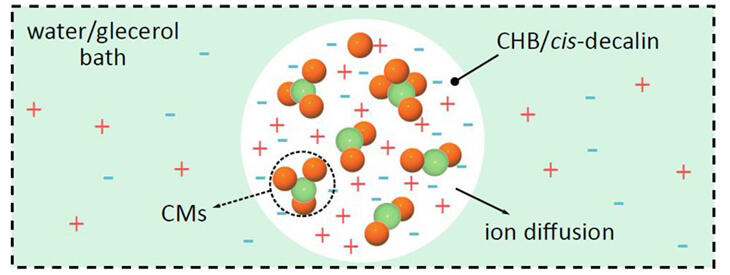Colloidal molecules (CMs) are artificial colloidal clusters with molecular-like structures and dynamic properties that exhibit behavior similar to macromolecules and proteins. They are expected to be important building blocks for hierarchically organized superstructures. However, experimentally analyzing the dynamic characters of colloidal molecules in detail has been a major challenge until now.
A research group led by Senior Program Advisor Hajime Tanaka from the Advanced Materials Division at the Research Center for Advanced Science and Technology at the University of Tokyo, along with Professor Hua Tong from the University of Science and Technology of China, and Dr. Huang Fang, Dr. Yujie Rong, Dr. Yanshuang Chen, Dr. Jiping Huang, Professor Zhihong Nie, Professor Wei Li, and Professor Peng Tan from Fudan University, has conducted research on the formation mechanism of colloidal molecules with molecular-like morphologies. They visualized the dynamic structure of colloidal molecules in real-time and elucidated the mechanism of order formation. Furthermore, they demonstrated that structural control is possible by adjusting the ionic strength in the solvent. Their research was published in Nature Communications.

Provided by the University of Tokyo
The research group successfully visualized the dynamic structure of colloidal molecules by combining real-time three-dimensional imaging using confocal microscopy with simulations, using a model system where micron-sized colloids are confined within emulsions. As a result, they revealed that the dynamic structure of colloidal molecules is inherently asymmetric, and that unique angular symmetry emerges during the progression from liquid-like arrangements to order formation. Additionally, they developed a new method to induce order formation in colloidal molecules by dynamically adjusting the ionic strength in the solvent. The effectiveness of this method was also verified through molecular dynamics simulations, and they proposed specific protocols for experimental implementation.
This research has significantly advanced the understanding of the dynamic properties of colloidal molecules and enabled control of their formation process. This will promote the design of new superstructure materials using colloidal molecules, with future applications expected in the fields of nanotechnology and soft material science. For example, potential contributions include the development of new functional materials through precise control of colloidal assemblies and research into protein-like self-organizing systems.
Tanaka commented, "In this study, we visualized the dynamic structure of colloidal molecules in real-time and elucidated the mechanism of order formation. We also demonstrated that structural control is possible by adjusting the ionic strength in the solvent. This achievement significantly advances the design of superstructure materials using colloids, with applications expected in nanotechnology and soft materials fields. In the future, we aim to apply this to more complex colloidal systems and pursue experimental optimization to make further contributions to materials science and biophysics."
Journal Information
Publication: Nature Communications
Title: Dynamic and asymmetric colloidal molecules
DOI: 10.1038/s41467-025-58057-1
This article has been translated by JST with permission from The Science News Ltd. (https://sci-news.co.jp/). Unauthorized reproduction of the article and photographs is prohibited.




